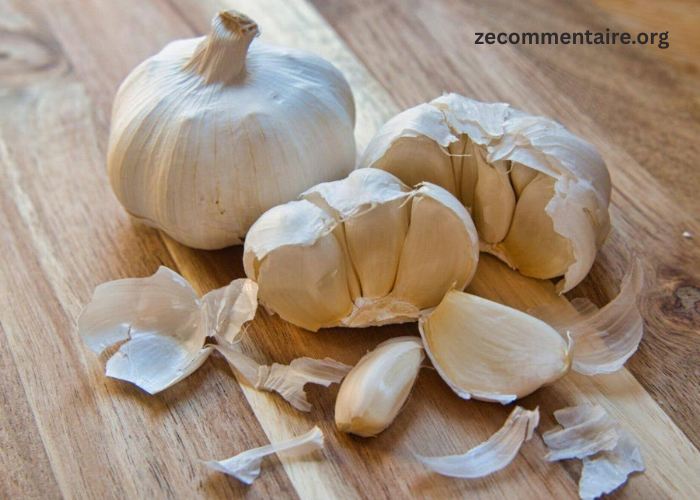Have you ever cooked a meal and wondered why the garlic tasted strong one time but mild the next? The answer may not be the garlic itself, but how you prepared it.
Garlic can change a dish completely depending on whether you slice it, crush it, or chop it. Each method releases different flavors and aromas.
By the end of this blog post, you’ll understand why these differences matter and how to use them to make your food taste better. Get ready to unlock the full power of garlic in your kitchen.
What Happens Inside Garlic When You Cut It
Garlic may look simple, but something big happens once you break it open. When garlic is cut, it releases a compound called allicin.
This is what gives garlic its strong smell and taste. The more you damage the garlic cells, the more allicin is made. That’s why crushed garlic often smells and tastes stronger than sliced garlic.
The way you prepare garlic changes how much allicin is released. This affects both the flavor and aroma of your dish. Some methods make garlic sharp and spicy.
Others make it sweet and mild. Once you understand this, you can start to choose the right method for each recipe.
Slicing Garlic for a Soft Touch
Slicing garlic gives it a gentle flavor. When garlic is sliced, less allicin is released because the cuts are not deep.
You’ll often see sliced garlic in dishes that cook slowly, like stews or roasted meats. The heat softens the garlic and brings out its natural sweetness.
Sliced garlic won’t overpower your food. It blends well with other ingredients and adds just the right touch.
This method works best when you want garlic to support the dish, not take over. It’s also good for people who like garlic but don’t want it too strong.
Chopping Garlic for More Flavor
Chopping garlic means cutting it into small, uneven pieces. This method breaks more of the garlic’s cells than slicing, but not as much as mincing. It gives you a medium-strength flavor-stronger than sliced but not as bold as crushed.
Chopped garlic works well in sauces, soups, or stir-fries. It cooks quickly and spreads flavor without being too sharp.
If you want garlic that stands out but still lets other flavors shine, chopping is a great choice. Just make sure not to burn it in the pan, or the flavor will turn bitter.
Mincing Garlic for a Stronger Kick
Mincing breaks garlic into very small pieces. This lets out even more allicin, giving your dish a sharper taste and a stronger smell. Mincing is common in foods that cook fast, like sautéed vegetables or garlic bread.
If your recipe needs garlic to stand out, mincing is the way to go. It spreads flavor evenly and cooks quickly. You can use a knife or a garlic press to mince.
Learning how to mince garlic cloves properly gives you more control over taste. It also saves time in the kitchen, especially when cooking with fresh garlic every day.
Crushing Garlic for the Boldest Flavor
Crushing garlic, either with a press or the flat side of a knife, releases the most allicin. This gives your food a very bold, almost spicy flavor. Crushed garlic can fill the room with its smell and give a strong flavor to your dish.
Crushed garlic is great for sauces like garlic aioli or dressings where you want that bold taste, but use it with care. Too much can easily overpower other ingredients. If you want garlic to be the star of the plate, this method is your best option.
Letting Garlic Rest After Cutting
After you cut garlic, letting it sit for a few minutes helps build flavor. Once allicin starts forming, it keeps growing for a short time. This means your garlic will taste stronger if you wait a bit before cooking it.
This is especially helpful when using raw garlic, like in dressings or dips. Even in cooked meals, giving garlic time to sit can make a difference.
It’s a small step that leads to better results. Don’t rush to throw it in the pan right away.
When to Use Each Method in Real Recipes
Different dishes need different garlic flavors. If you’re making something slow-cooked like soup, sliced garlic works well. It gets soft and sweet over time.
For pasta sauce, minced garlic gives a sharp boost. If you’re making a salad dressing or dipping sauce, crushed garlic gives a strong, raw flavor.
Use chopped garlic in quick meals that still need a bit of garlic flavor. It holds its shape but still gives a good punch.
If you want to keep your food balanced, match the method to the kind of dish you’re making. This turns a simple meal into something truly tasty.
How Cooking Time Changes Garlic’s Taste
Garlic also changes with heat. If you cook it for a short time, the flavor stays strong.
Long cooking makes it sweet and soft. That’s why roasted garlic tastes so different from raw garlic-it breaks down over time and loses its bite.
No matter how you cut garlic, the cooking time still affects how it tastes. If you want bold garlic, cook it fast.
If you want it gentle, let it cook slowly. This works together with your cutting method to build the exact flavor you want.
A Small Change with Big Results in the Kitchen
You don’t need to be a chef to prepare garlic the right way. Just paying attention to how you cut it can change your cooking for the better.
Whether you slice, chop, mince, or crush, each method gives you a different tool to build flavor. Garlic is small but powerful, and learning how to use it well brings out the best in every meal.
By knowing which technique fits which dish, you’ll have more control in the kitchen. Your meals will be tastier, and you’ll understand why. That’s the power of proper garlic preparation.
The Secret Behind Better Flavor Is in Your Hands
Changing how you cut garlic may seem like a small thing, but it makes a big difference in taste and smell. From soft slices to bold crushed cloves, each method creates a new flavor.
Now that you know how each style affects your food, you can choose the best one for every meal. Garlic is more than a spice-it’s a tool for better cooking. Use it with care, and it will reward you with amazing taste.
Did this guide help you? Browse the rest of this section for more variety of topics.





